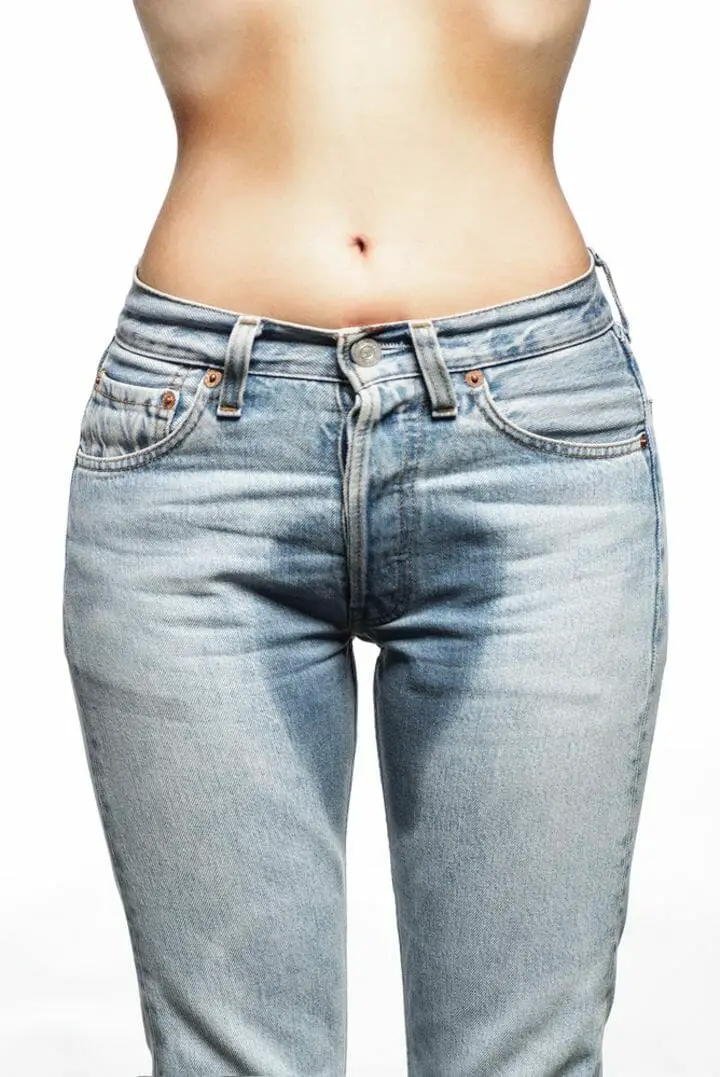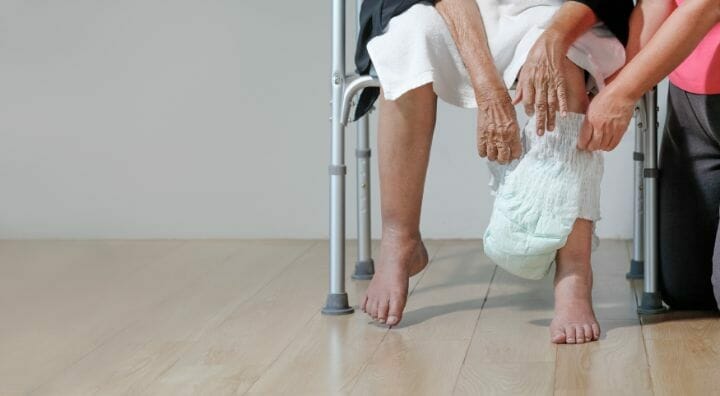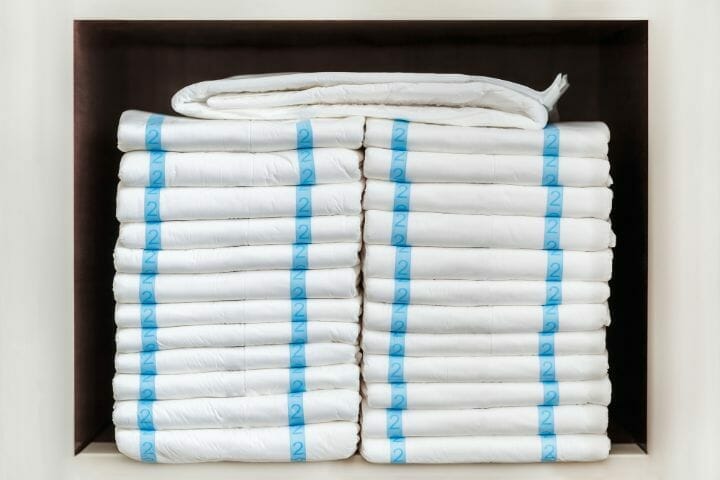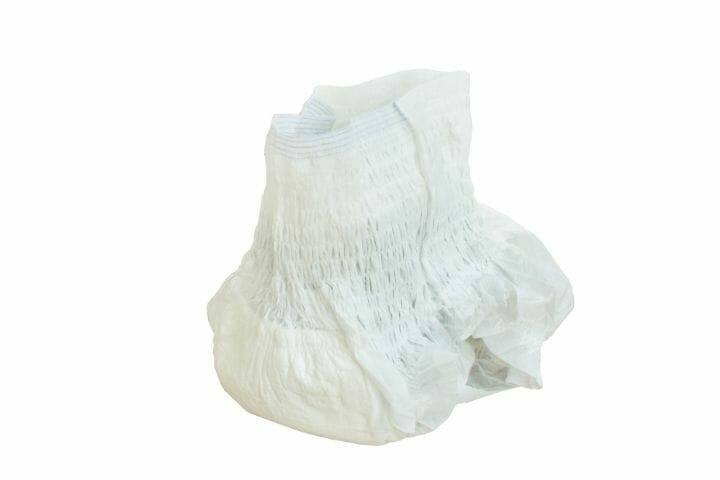A few factors should be taken into account when determining how often to change an
The primary factor is the health status and lifestyle of the individual wearing them. A healthy, active person does not need to change their frequently, as they will usually be able to go to the washroom when they feel the need to. However, an older, bedridden person who is incontinent will typically need to change their more frequently, as they will either not be able to relieve themselves or not be aware of when they need to.
The severity of urinary incontinence varies by individual. Some folks have a more severe loss of bladder control than other individuals, and will have much more frequent urges to urinate that cannot be controlled, while others may have irregular and situational incidences of incontinence. The severity of an individual’s incontinence is important to be aware of to help determine how often to change their diapers.
In some cases, nursing staff in an assisted living facility may be pressured by the management to reduce the number of adult diapers used, a decision solely taken on budgetary concerns. However, this means that your beloved elderly adult may be sitting in soiled diapers longer than necessary, causing health issues ranging from a to .
Unquestionably, the health and fitness of care home residents and patients should always be prioritized. It is necessary to have a better understanding of incontinence and other forms of leakage, the best forms of incontinence and sanitation products, as well as the best practices with which to clean and help with incontinence.
Urinary Incontinence
Urinary incontinence can be known as a recurring loss of bladder control. It can range from occasional leakage during sneezing to stronger and more frequent urges to urinate such that the person would be unable to reach the toilet in time. In these cases, diapers are to be worn regularly.
Urinary incontinence is often associated with older age, though older age is not necessary. With older age, an individual’s bladder muscle can atrophy, resulting in decreased ability to store urine. The hormone estrogen is involved in keeping the bladder lining healthy, and reduced estrogen after menopause may be a cause of incontinence in women. Incontinence is also a commonly associated symptom of an enlarged prostate or prostate cancer in men.
Any tumor, urinary stones, or another blockage that develops in the urinary tract can cause incontinence. Neurological disorders that affect relevant nerves can hamper an individual’s ability to hold urine or control urination properly.
If a care home resident has urinary incontinence, it is important for the care home staff to prepare diapers and plan diaper changes for the individual so that urine leakages are properly cared for and the individual is kept well and comfortable.
Accidental Bowel Leakage
Accidental bowel leakage (ABL) is an inhibited ability to control bowel movements, resulting in stool to leak accidentally from the rectum. It is commonly caused by intestinal conditions involving diarrhea or constipation, though in older folks, common causes can also include muscle or nerve damage.
ABL can happen at unexpected, inconvenient times. For the most part, ABL does not affect an individual severely. In the U.S., with 6.9% of adult women and 7.4% of adult men suffer from minor . When this happens the underclothes are stained because of leakage of stool. According to statistics, 90% of people with ABL experienced only light to moderate leakage.
ABL is more often seen in adults over age 65, though it can begin at any age. It is also more commonly seen in women who have had complications during childbirth, or who have taken menopausal hormone replacement therapy. In the United States, nearly one-fifth of women over age 45 experience ABL, and it is estimated that 50% of individuals do not speak up about it.
ABL can be challenging for a to help with, since they will need to frequently check if a disposable diaper has been soiled. Finding quality for is key here. With the right absorbent products, the nursing staff can ensure better hygiene for residents in the assisted living facility.
You may also like Bedpan Alternatives for Managing Urinal Incontinence
and Adult Diapers
Generally, an elderly resident in a nursery home with urinary incontinence will need a diaper change six to eight times a day. Elderly folks in a nursery home will oftentimes require the help of a family member or in the
If a patient is suffering from incontinence, check the adult diapers at least once every four hours, though every two hours is recommended. This is a timeframe that is important to follow, because if diapers are not changed promptly, there is a high chance that the elderly adult who is left wearing a develop problems including that can give rise to life-threatening infections.
If you are a nursing home staff, we would recommend that you check not only by smell, but rather by sight and feeling, using medical gloves to check whether the incontinent residents have soiled their diaper. Some adult diapers have a line going down the middle that changes color when the wearer urinates.
staff should ensure that the ‘s skin is cleaned well while changing a diaper and putting on a new one. This is required each and every time a soiled diaper is changed; otherwise, the can suffer from skin conditions, causing further problems to their health.
There are like wipes that are specially designed for cleaning skin in this area and can be found on online sites that sell . These incontinence products are gentle to the elderly’s sensitive skin; the wipes are free from harsh chemicals and abrasion and will help keep the bedridden patient’s skin and private areas clean and free from pressure sores.
When determining whether a diaper should be changed, take into account the material of the
For cloth diapers and vinyl pants: If the has collected to a point that the is no longer absorbing the wetness, the should be changed immediately.
For disposable diapers: Check the after the wets it for the second time. If it feels heavy, change immediately. If the is not changed soon after it gets thoroughly wet, the will flow out and down the pants leg and will show through as a wet spot on the outer clothing.
You may also like How to Convince an Elderly Parent to Wear a Diaper
Finding the Right Product
Flexibility
One factor to choose is the amount of flexibility offered; choose one that matches the activity levels of the elderly residents in the long-term care home. For people in a , it is best to choose the product that is specific to gender or that one which is for unisex. Keep a sharp eye on the sizing, and level, which is determined by the material of the .
Diaper Style
Adult diapers can either be pull-on or tab-style; the can choose which diaper style they prefer to use, as in many cases it will be the caregiver who helps the resident put on and replace the diaper. Also, determine whether the resident prefers a reusable or disposable product.
Some trial and error may be necessary for finding the right product. You may find that one diaper is best for containing leaks overnight, while another provides a slimmer profile and is better for outings during the day that include activities like walking and light exercise.
Material
The next point to consider when choosing the right is the material. Some diapers have plastic backings. Diapers with plastic backings can give more protection from leakage, but older adults tend not to like the bulky feel of these diapers.
The other option would be diapers that are non-plastic backed, also known as breathable diapers. As the name suggests, they allow for more airflow and prevent rashes.
A diaper’s degree of absorbency varies from maximum to light. If you are addressing only a mild incontinence issue, a pad that is coupled with the incontinence pant would suffice. If there is an issue of or complete bladder loss, then you will likely need to pick an adult brief with heavy-duty
Skin Condition
Sitting in urine and fecal matter can be very damaging to sensitive skin and this potential should not be overlooked. The best course of action is to change the patient’s soiled briefs and liners when wet, and the private areas must be gently cleaned and dried. Search for the product that has a soft lining and can wick and trap moisture away. Apply a ointment that serves as skin barrier, thus protecting the area from irritation by removing moisture.
Sizing
Picking a suitable size is crucial when shopping for an adult diaper. Using a which is too small results in the patient not getting the required coverage. If the diaper is too large, there will be gaps that can result in leakage of urine or fecal materials, leading to soiled clothing or bed linens.
To select the right-sized brief or pull up, get an accurate measurement of the person’s waist size. Once you know the waist size, then you can review the sizing charts of the different brands. Unfortunately, brands may vary slightly in the waist sizing of their products, so make sure to double-check the sizing of each product.
Price
Our advice is to consider price last. Aim to choose a diaper that best fits your elderly adults’ needs. In fact, you may find that a pricier product is more durable and provides better protection, therefore requiring fewer changes and costing less in the long run.
Note that some product manufacturers offer free samples with which you can do trial phases, enabling you to save on money when choosing diapers.
You may also like Best Barrier Cream For Elderly
Frequently Asked Questions
Q. When changing an adult diaper, how is the area cleansed?
Ensure your hands are washed with soap before a diaper change.
After the diaper is removed and disposed into a plastic bag, both the front and back of the diaper area is thoroughly cleaned with moistened wipes. See here for a list of recommended moistened wipes for incontinence.
When wiping, avoid rubbing the skin too hard to maintain comfort and to avoid chafing the skin. You may need to roll the individual you are caring for onto their back or side to be able to reach every area that needs cleaning. The used wipes can be disposed into the same bag as the used diaper.
Barrier cream can be applied to the perineum to moisturize and protect the skin. During this process, check for any sores or skin conditions that may have developed that would need addressing.
Afterwards, a new diaper can be worn.
Q. Should care home staff be changing other items during a diaper change?
During a diaper change, the individual’s pants, bedding, and chairs (including any wheelchair) should be checked for cleaning as well. The garments and bedding sheets are particular important to check for, as not changing them and continued exposure can lead to the skin conditions previously mentioned.
Q. What are some of the best brands of adult diapers for urinary incontinence?
FitRight, Medline, LivDry, and Depend are some of the major brands that produce adult diapers. Some of their diaper varieties are specially designed for bedridden patients, with extra comfort and absorbency. Larger quantities for assisted care settings may be purchased at a more reasonable price at Amazon or Costco.
You may also like Best Elderly Care Companies
Q. As the family of a long-term care home resident, how we help the home staff in caring for our family member with urinary incontinence?
As the family member care home patient, it will be your responsibility to inform the staff of the long-term care home of the medical details and patterns of urinary incontinence or bowel leakage that you are familiar with from your time living and caring for your family member. The staff can use this information to plan when to do diaper changes or assist with incontinence or leakage as needed. If incontinence or leakage incidents occur more frequently or not on a typical schedule, this information will be particularly useful and can help staff about leaving a soiled diaper situation unattended.
Q. How is urinary incontinence diagnosed?
Urinary incontinence can be diagnosed via a urinalysis, in which a sample of urine is tested for signs of infection or other abnormalities. If incontinence is suspected, a patient may be asked to a keep a diary of their bladder, which would include recording how much they drink, how often they urinate, and episodes of incontinence.
Finally, a postvoid residual measurement can be done, in which the patient will be asked to urinate or void into a container, after which the physician can check to see how much residual urine that is left in the bladder via ultrasound or catheter. More residual urine can suggest obstructions or muscle or nerve issues, which are potential causes for incontinence.
Q. How is accidental bowel leakage diagnosed?
Diagnosis for accidental bowel leakage will often begin with a digital rectal exam, wherein a physician will insert a lubricated, gloved finger into the patient’s rectum to determine strength of the sphincter muscles and abnormalities. Weakened sphincter muscles indicate greater chance of accidental bowel leakage.
Diagnosis can progress to one of several different scopes and instrumentations to make a clearer diagnosis, and these can include a colonoscopy, anorectal ultrasonography, anal manometry, or MRI.
You may also like Best Absorbent Underwear for Adults
Parting Words – Finding the Right Diaper Now Saves Hassle Later
There is plenty of options to allow for personal preference when choosing an selection; however, the product you choose must absorb and protect and also let the skin breathe, for the sake of the comfort and wellbeing of the person you are caring for.
We hope the information we have provided in this article has been helpful for your understanding of how incontinence and leakage, how diapers are changed in a care setting, and how to choose an optimal diaper from the variety of options out there.
Do let us know what tips you found enlightening in the comments below!





